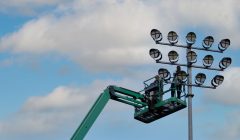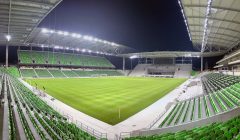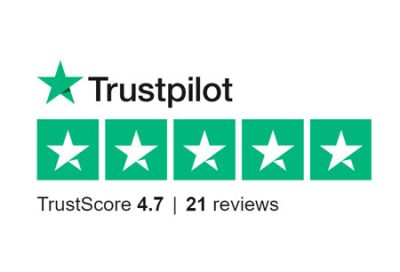There are more than a few reasons to go with commercial LED lights over all the other lighting options for commercial use. While we have discussed all the reasons and benefits already in other blog posts, this one is dedicated to understanding the factors you should keep in mind when you go shopping the right LED lights for your needs.
So let’s jump in.
Table of Contents
ToggleConsider the Lumens, Not the Watts!
Many people fail to understand that when they are talking about the brightness of their light, they are actually talking lumens and not watts. This is especially true for commercial LED lights, as they tend to consume much less energy (which is measured in watts) than their traditional counterparts, which might make it seem that they aren’t bright enough.
But that certainly isn’t the case. In fact, LEDs offer the same kind of brightness with just around 10 watts of power that an incandescent would need about 60 watts for.
Now, when it comes to brightness (which, again, you should measure in lumens), there are no numbers set in stone. That said, as a rule of thumb, you will need at least 1000 lumens for a ceiling of 12 to 14 feet in a commercial facility. Similarly, a 2000-foot ceiling would require over 2000 lumens.
So measure your lumen requirement accordingly before you hit the market shopping for commercial LED lights.
Be Prepared to Pay More!
Don’t let the prices of commercial LED lights scare you away into buying their traditional counterparts. LED lights are typically expensive initially, but over time, they turn out to be a much more economical lighting option.
However, LED lights – both commercial and others – have come down in price significantly with the advancement in the industry and increased competition. But they are still considerably more expensive than something like incandescent lights.
But let’s talk about the savings.
Don’t Forget the Efficacy
When it comes to commercial LED lights, efficacy is one of the most important factors to consider. Efficacy basically represents the amount of visible light you will be getting for the amount of energy that will be consumed by the bulbs or fixtures.
A simple formula to find out the efficacy is to divide the number of lumens a light produces by the number of watts it consumes. So for instance, if a commercial LED bulb produces 540 lumens while consuming 10 watts of power, its efficacy will turn out to 54 lumens per watt. Needless to mention, it would turn out to be a much better option than a traditional lighting bulb that uses 50 watts for producing the same amount of lumens, as in that case, the efficacy would be much lower at 10.8 lumens per watt.
Type of Fitting
This is basic but something that you shouldn’t mess up at all. If you’re replacing your current lights with LEDs, you will need to get an exact idea of the fitting of your current lights. The types of fitting can wary widely from a screw base to a more recent GU10 base.
Most of the time you will be able to find this information on the box of the lights you’re using. There are online resources that help you decipher this information easily.
Does Color Matter?
While you would only want to explore a limited number of color options for commercial LED lights, you would still have more options than something like the traditional incandescent or halogen lights.
The popular color option for commercial environments is cool white, bright white and daylight. Now, if you would like the color to be similar to many of the traditional options, then you would want to go with lower color temperature.
The color temperature of lights is measured in kelvins. A lower number means that the light would be warmer – and yellower.
Here’s a quick look at the general color temperature range for the popular lighting options:
- Incandescent bulbs – 2500K to 3500K
- Halogen lamps – 2700K to 3500K
- Fluorescent lamps – 2700K to 6500K
- LED lights – 2700K to 6500K
For commercial LED lights, your best bet would likely be 4000K and more, unless you want to stick to a color temperature like the traditional lighting options.







